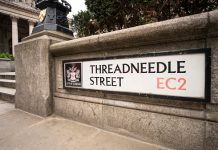- The contraction in the U.S. economy in the first quarter was revised to 5% annualized in the second estimate, slightly worse than the 4.8% reported a month ago.
- The second estimate is based on more complete source data than were available for the “advance” estimate issued last month. The BEA used novel data techniques to estimate GDP during the COVID-19 crisis, and this small revision shows that these worked reasonably well.
- Personal consumption expenditures fell by 6.8% annualized in Q1, a smaller decline than initially reported (-7.6%). Durable goods purchases fell -13.2% (-16.1% prev.), while nondurable purchases rose sharply (+7.7%). Spending on services was down sharply (-9.7%), led by reduced spending on health care, which subtracted two percentage points from GDP growth on its own.
- Non-residential fixed investment fell -7.9%, led by a 16.7% drop in equipment spending. Nonresidential structures, which includes spending on oil shafts and wells fell 3.9% (prev. -8.6%). As usual, investment in intellectual property bucked the trend, managing to advance 1.0% (prev. +0.4%).
- Residential construction was on a tear prior to the COVID-19 crisis, with investment there up 18.5% (+21% previously).
- Government spending was up a modest 0.8% (+0.7% prev.) led by federal nondefense spending (+3.1%). Spending at the state and local level rose only 0.2%, held back by school closures at the end of the quarter.
- The drawdown in inventories was one of the key revisions from the first to the second estimate. It now subtracted 1.4 percentage points on the quarter, versus 0.5 percentage points previously.
- Disruptions to international trade were significant. Exports fell 8.7% and imports fell and even larger 15.5%. The COVID-19 outbreak in China earlier in the quarter shut down much of its manufacturing sector, and would have reduced shipments to the U.S. Overall net exports added 1.3 percentage points to headline GDP, the same as reported in the first estimate.
- Inflation, as measured by the Fed’s preferred measure, core PCE deflator, was revised lower in the first quarter to 1.6% annualized quarter-over-quarter from 1.8% in the first estimate. Tomorrow we will get the monthly PCE data for April, which will show how inflation fared in the peak month for shutdowns.
- Corporate profits were $295.4 billion lower in the first quarter – the largest decline since Q4 2008 . Profits fell in both nonfinancial (-$169.5 bn) and financial sectors (-$67.4 bn).
Key Implications
- Overall the revisions to the contraction in activity in the first quarter were reasonably minor. Smaller declines in consumer spending and business investment were outweighed by a larger drawdown in inventories. For economists, the interesting point is that the novel data techniques used by the BEA to capture the sharp contraction in activity at the end of the quarter seemed to have worked relatively well. It will be interesting to see if the agency continues to use them to do the first estimate on a go-forward basis.
- Apart from that, this report is fairly backward looking, with greater attention to be focused on tomorrow’s income and spending data for April. That is likely to be an ugly report, and will help refine estimates of the contraction in spending in the second quarter.













